
Hangzhou is a modern city in a classic Chinese setting. The city hums with activities and an endless flow of traffic, signs of its place in the 21st century, while the beautiful West Lake lies peacefully at the heart of all the commotion, soothing the senses.
In eastern China, Hangzhou is the capital of Zhejiang Province and one of the seven capitals of ancient China. The city is also the southern end of the Beijing-Hangzhou Grand Canal, the longest canal ever built in the world. Find out more about the city’s history which dates back 5,000 years, or immerse yourself in the cultural heritage by sitting back and relaxing with a cup of exquisite West Lake Longjing Tea.
CLIMATE
Hangzhou's climate is humid subtropical with four distinctive seasons. The mean annual temperature is 16.5 °C (61.7 °F), with monthly daily averages ranging from 4.3 °C (39.7 °F) in January to 28.4 °C (83.1 °F) in July. The city receives an average annual rainfall of 1,450 millimeters (57.1 in).
SCENIC SPOT
West Lake
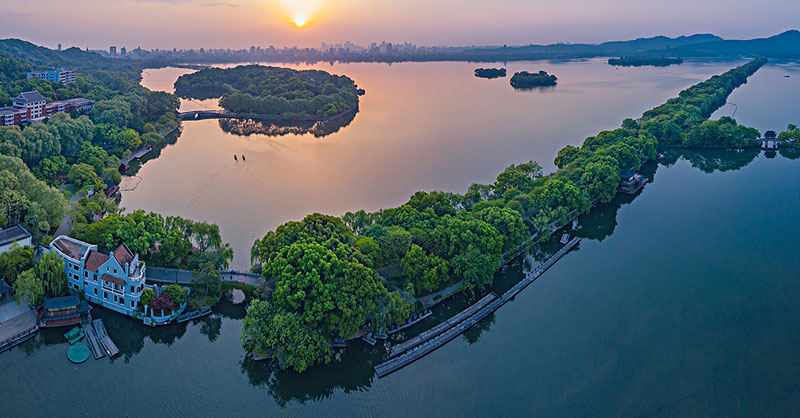 BIRD VIEW OF WEST LAKE
BIRD VIEW OF WEST LAKE
West Lake came from a shallow bay in ancient times where the Qiantang River ran into the sea. It was formerly named Wulin Waters, Golden Buffalo Lake, Qiantang Lake and Xizi Lake. Because it lies in the west of Hangzhou, it was later named the West Lake.
The lake covers an area of 6.38km2, with an average depth of 2.27m and the deepest point being 5m. It has mountains on three sides and the city on the other side. The lake and mountains are magnificent.
Centered in West Lake, the West Lake Scenic Area is a national scenic area with a total area of 59 km2. There are over 60 cultural relic sites and over 100 attractions. Among them, the most classic is the Ten Scenes and the New Ten Scenes at West Lake.
Xixi Wetlands
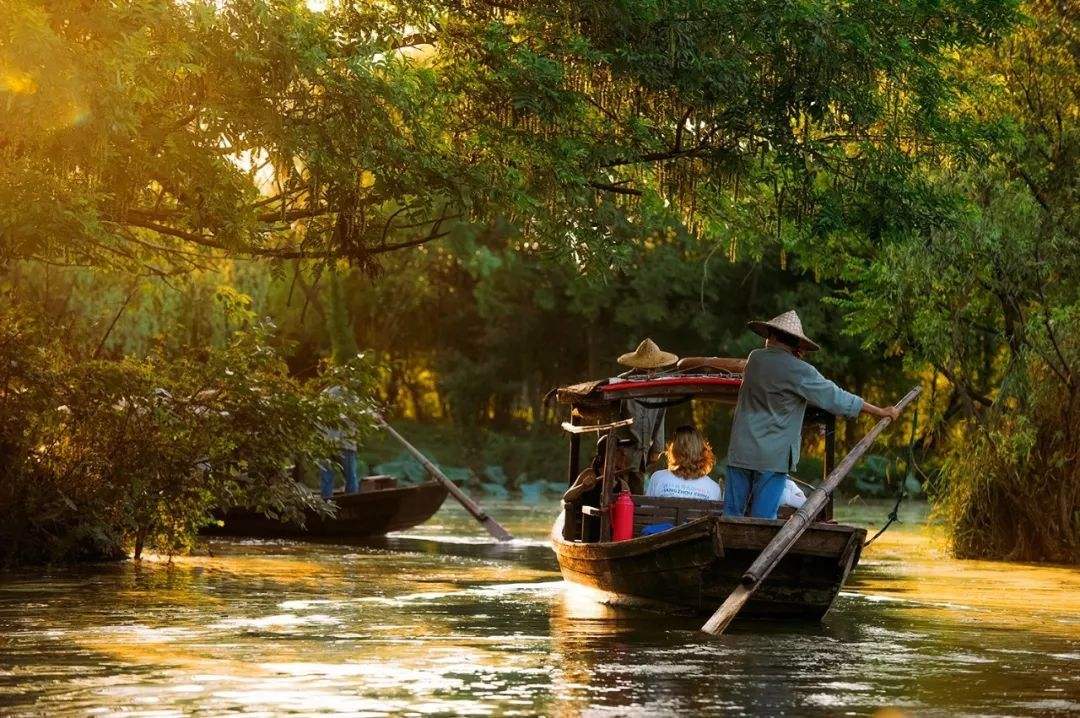 XIXI WETLAND
XIXI WETLAND
Located in west of Hangzhou, 5km from the West Lake, Xixi Wetlands is a farmland wetland in the urban area. This is rare in China even in the world. Xixi Wetlands is a network of rivers, together with the Xihu (Chinese pronunciation of West Lake) and Xiling, Xixi wetland is one of three "Xis" of Hangzhou. As an oasis in the urban area, it has been recognized as the first national wetland park in China. It has a Chinese wetland museum and is a national base for environment protection and popular science.
Xixi National Wetland Park is densely crisscrossed with six main watercourses, among which are scattered various ponds, lakes and swamps. Xixi Wetland has a history of more than 1,800 years and an abundant cultural heritage - it's the original site of Chinese Southern Opera; it has a traditional Dragon Boat Race and contains the vivid life of a water village, featuring silkworm feeding and silk production.
Grand Canal
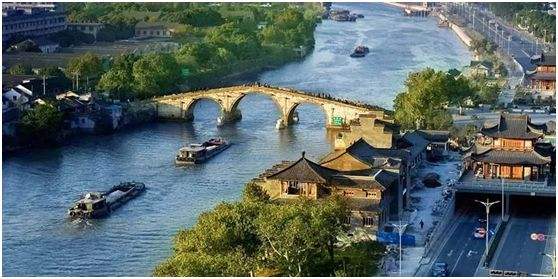 GRAND CANAL
GRAND CANAL
The 1,700-kilometer-long Beijing-Hangzhou Grand Canal is a water conservancy project in ancient China. It begins at Beijing and ends at Hangzhou. First constructed at the end of the Spring and Autumn Period in the 5th century B.C., The Grand Canal has played an important role in the development of water, conservancy and the economic as well as cultural exchange between the northern part and the southern part of China. It has become a distinguishing cultural site.
Different from most rivers in China which flow from west to east, the Grand Canal is a connector between the north and south from the Yangtze River Valley to the northern part, linking Haihe River, Yellow River, Huaihe River, Yangtze River, and Qiantang River. Due to its direction of flow, the Grand Canal played a very important role during the ancient time in economic industry.
Although the Grand Canal is only a small part of the economy these days, it still is a key system for water diversion. The Beijing-Shanghai Railway and sophisticated road systems have marginalized the canal as an important means of transportation, although parts of it, mainly the central and southern sections, are still in use.
Lingyin Temple
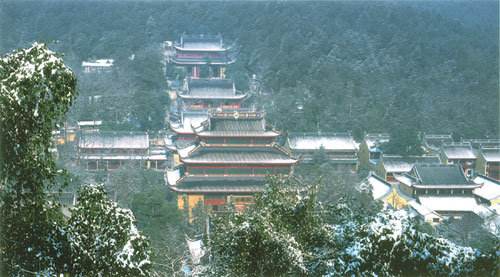 LINGYIN TEMPLE
LINGYIN TEMPLE
Lingyin Temple is one of the ten most famous ancient Buddhist monasteries in China. In front of it are the Peak That Flew Here and the Cold Spring. According to historic record, during the period of Eastern Jin dynasty (317 - 420 AD) Huili, an Indian Monk, came here and built the temple called "Lingyin"(326 AD) after the name of the mountain. And Emperor Kangxi (1662 - 1723 AD) of the Qing Dynasty later gave it another name "Yunlin Buddhist Temple".
The existing temple was rebuilt during the 19th century. The Hall of Mahavira (great hero) inside the temple is 33.6 meters in height, and the statue of Sakyamuni (563? - 483 BC) in the Hall, was carved out of 24 pieces of camphor wood. In front of the Hall are two pagodas of rock which were built in 960 AD of the Song Dynasty.
Surrounded the temple are majestic peaks and sky-reaching ancient trees; it is really a tourist attraction that can offer appealing places of historic interest, cultural relics and beautiful natural scenery with woods, flowers, springs, etc.
Qinghefang Street
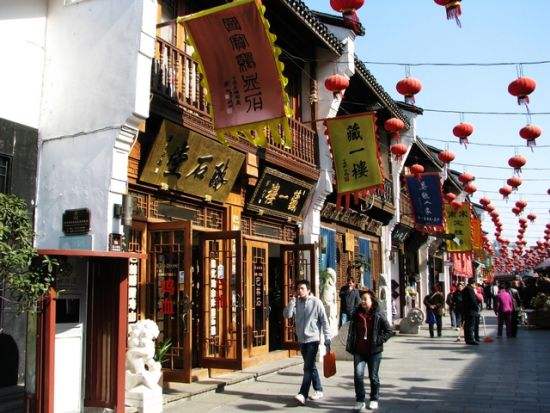 QINGHEFANG STREET
QINGHEFANG STREET
Qinghefang Street has been the most prosperous place in Hangzhou since the ancient time. Since the time of the Southern Song Dynasty, there have been lots of shops and restaurants in Qinghefang, as the political, cultural and business center of Hangzhou.
Qinghefang Street lies on the foot of the Wushan Hill at the southern end of Yan’an Road, south of Hangzhou with just a few hundred meters away from the beautiful West Lake and it occupies an area of 13 hectares with a length of about 460 m.
In front of a crystal crafts shop in Qinghefang Street, a group of tourists are fascinated by the exquisite craftsmanship of the shop owner who has even forgotten all about his business. This is a very common scene on Qinghefang Street. Now more and more such shop owners can be seen in Qinghefang Street: those who sell the bamboo flutes play the flute at the shop; those who sell the knitted sweaters knitting the sweaters; and those who sell writing brushes making them at the shop. The harmonious combination of such traditional "workshop" model of business operation with tourism has become an attractive scene to tourists.
Leifeng Pagoda
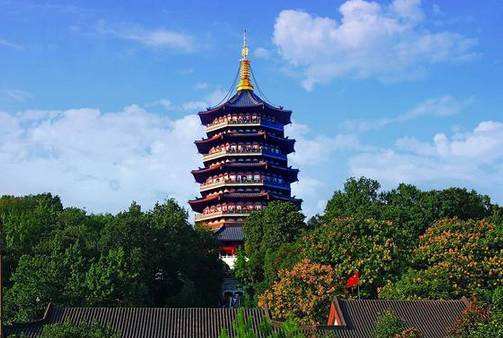 LEIFENG PAGODA
LEIFENG PAGODA
Leifeng Pagoda is located on the shores of the southeast side of the lake and was originally built in the year 977. All that remains of the original pagoda is the crumbling foundation, viewable from outside the glass case that it is housed in (Pagoda Remains Memorial Museum at the bottom floor of the pagoda). With escalators, elevators, and a totally new pagoda on top of the foundation, there is not much to see inside the pagoda except a dazzling wood carving depicting the famous “white snake “ story .It was most recently rebuilt in 2000.
The view of the city skyline is one of the best from the top of Leifeng Pagoda, and some of the smaller seating areas around the perimeter of the pagoda have a nice breeze and view of the structure. One of the 10 Scenes of the West Lake is "Leifeng Pagoda in Evening Glow", but this is best viewed from a distance (across the lake) just after sunset.